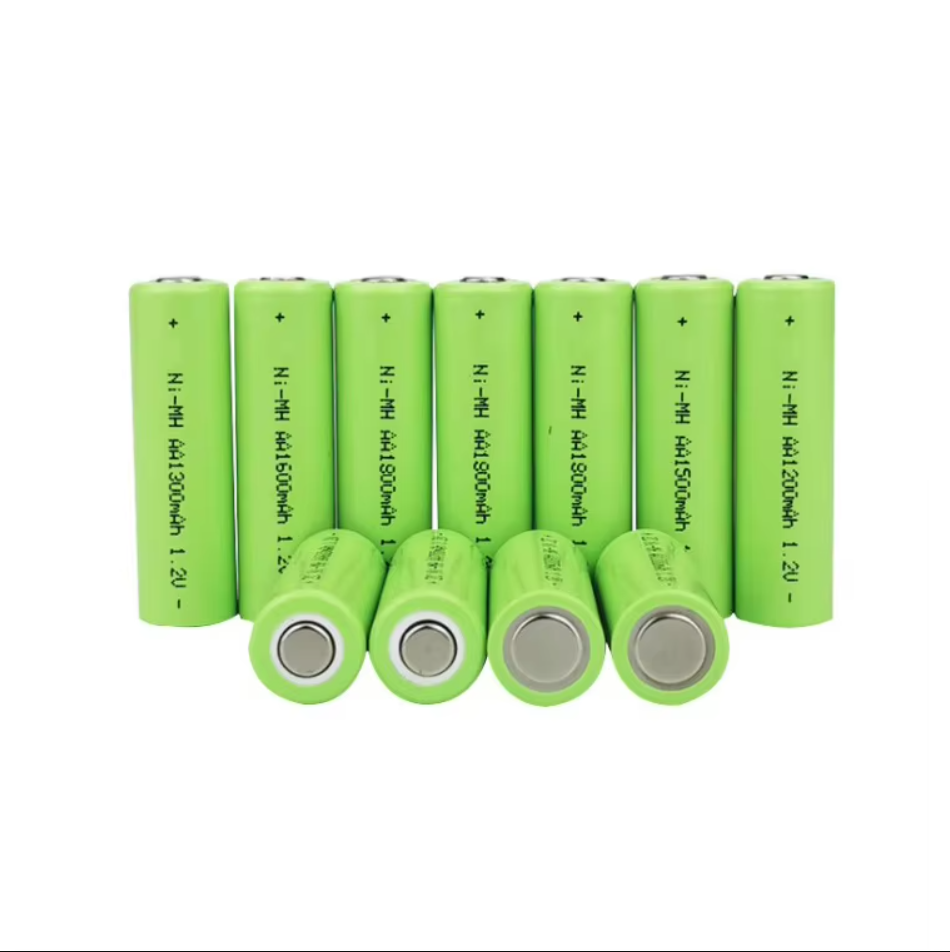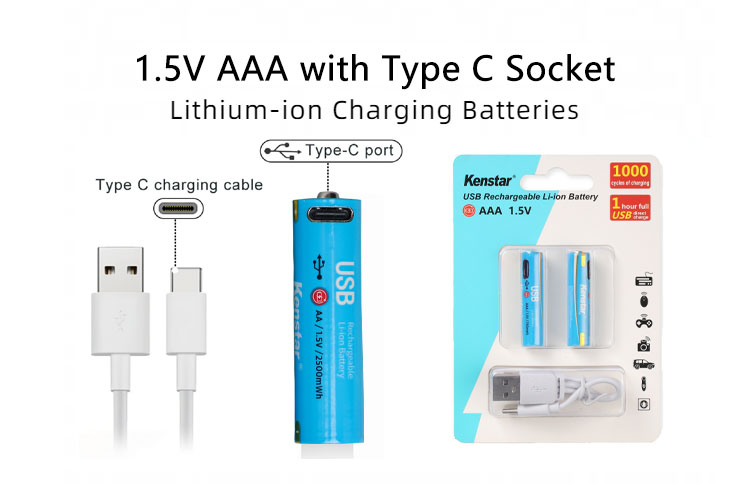
Selecting the right AAA rechargeable batteries is crucial for optimal device performance, especially in high-drain applications. I find that NiMH batteries excel in these scenarios due to their ability to deliver consistent power and longer lifespan. Their chemistry enhances performance, making them a reliable choice for demanding devices.
Key Takeaways
- NiMH batteries are ideal for high-drain devices due to their consistent power delivery and longer lifespan.
- Consider the capacity and internal resistance of batteries to ensure optimal performance in demanding applications.
- Rechargeable batteries are eco-friendly and cost-effective, providing long-term savings compared to disposable options.
Types of AAA Rechargeable Batteries
When it comes to AAA rechargeable batteries, I find that two primary types dominate the market: Nickel-Metal Hydride (NiMH) and Lithium-ion (Li-ion). Each type has unique characteristics that make them suitable for different applications, especially in high-drain scenarios.
Nickel-Metal Hydride (NiMH)

NiMH batteries are my go-to choice for most high-drain devices. They offer several advantages:
- Nominal Voltage: 1.2V, which is compatible with most devices.
- Capacity: Typically ranges from 600mAh to 1000mAh, providing longer runtimes for demanding applications.
- Low Self-Discharge: The Low Self-Discharge (LSD) variants retain charge for months, making them ideal for devices that are not used frequently.
- No Memory Effect: I appreciate that NiMH batteries can be recharged without needing a full discharge, allowing for flexible usage.
- High Current Output: They efficiently deliver power to devices like digital cameras and gaming controllers, where performance is critical.
Lithium-ion (Li-ion)

Li-ion batteries are gaining popularity, particularly for specific applications. Here’s what I’ve learned about them:
- Nominal Voltage: 3.7V, which is higher than NiMH, making them suitable for devices that require more power.
- Capacity: Generally ranges from 800mAh to 1200mAh, providing robust energy delivery.
- Self-Discharge Rate: Li-ion batteries have a low self-discharge rate of about 1.5% to 2% per month, which means they hold their charge well over time.
Here’s a quick comparison of the two types based on their cycle life and self-discharge rates:
| Battery Type | Self-Discharge Rate | Cycle Life |
|---|---|---|
| AAA Li-Ion | Low (1.5–2% per month) | 500–1500 cycles |
| AAA NiMH | High (20–30% per month) | 500–1000 cycles |
Key Characteristics for High-Drain Use
When I evaluate AAA rechargeable batteries for high-drain applications, several key characteristics stand out. These features significantly influence performance and longevity in demanding devices. Here’s what I consider essential:
- Capacity: AAA batteries typically have a lower capacity compared to AA batteries. This limitation can affect their performance in high-drain scenarios. For instance, while AAA batteries may work well in low-drain electronics, they often struggle in devices that require more energy. I’ve noticed that using AAA batteries in tools designed for AA batteries can lead to shorter operational times.
- Internal Resistance: The internal resistance of a battery plays a crucial role in its ability to deliver power efficiently. Lower internal resistance allows for better power delivery, which is vital for high-drain devices that need short, high-current bursts. Conversely, high internal resistance can cause voltage drops under load, leading to premature low battery warnings and reduced runtime. I’ve experienced situations where a battery appeared depleted even when it still had charge due to this internal resistance barrier.
- Voltage Stability: Maintaining voltage stability under continuous high-drain usage is critical. Both NiMH and Li-ion batteries are designed to provide long-lasting energy for modern equipment. I’ve found that premium-quality batteries offer better voltage stability and longevity compared to generic options. Devices with high energy demands can drain battery power rapidly, affecting voltage maintenance. User habits, such as charge and discharge cycles, also significantly influence battery performance.
- Operating Temperature Range: The operating temperature range is another important factor. Different batteries perform optimally within specific temperature limits. For example, GMCELL 1.5V AAA 500 USB Rechargeable Batteries operate effectively between -20 to +60℃. In contrast, Lithium-Ion batteries can function well in temperatures ranging from -20°C to 60°C. Understanding these ranges helps me choose the right battery for various environments.
Here’s a quick overview of the operating temperature ranges for some AAA rechargeable batteries:
| Battery Type | Operating Temperature Range |
|---|---|
| 1.5V AAA 500 USB Rechargeable Batteries | -20 to +60℃ |
| VAAA-4 High Drain Rechargeable 4 AAA Ni Zn Batteries | -40F to 176F |
| Lithium-Ion Batteries | -20°C to 60°C |
Factors to Consider When Choosing AAA Batteries
When selecting AAA rechargeable batteries, I focus on several critical factors that can significantly impact performance, especially in high-drain applications. Here’s what I consider essential:
- Cost vs. Performance:
- While alkaline batteries are cost-effective for low-power needs, I find that rechargeable options, like the Energizer Recharge Universal, offer better long-term value. They may have a higher upfront cost but save money over time due to their reusability.
- Device Power Needs:
- High-drain devices, such as digital cameras, benefit from Lithium or rechargeable batteries. These batteries provide consistent power, ensuring devices run smoothly during demanding tasks.
- Frequency of Use:
- For devices that require frequent battery changes, I prefer rechargeable batteries. They not only reduce waste but also offer significant savings in the long run.
- Environmental Impact:
- I appreciate that rechargeable batteries are eco-friendly. They minimize waste compared to disposable options, which contribute to environmental pollution.
- Brand Reputation:
- I trust brands like Panasonic eneloop,Duracell Rechargeable and Kenstar Rechargeable. Their products consistently deliver reliable performance and longevity. For instance, Panasonic eneloop batteries can be recharged up to 2100 times, making them a smart choice for high-drain applications.
- Warranty Coverage:
- Warranty life is another important consideration. A solid warranty can provide peace of mind. For example, some AAA rechargeable batteries come with a three-year manufacturer warranty, ensuring quality and reliability.
Here’s a quick comparison of different battery types based on these factors:
| Factor | Alkaline Batteries | Lithium Batteries | Rechargeable Batteries |
|---|---|---|---|
| Cost | Cost-effective, ideal for low power needs | Higher upfront cost, but long-lasting | Cost-effective over time, reusable |
| Performance | Good for low to moderate power demands | Best for high-drain devices | Consistent power for high-demand devices |
| Environmental Impact | Disposable, contributes to waste | Disposable, but longer-lasting | Eco-friendly, reduces waste |
| Frequency of Use | Not ideal for frequent changes | Not suitable for frequent changes | Ideal for frequent use, can be recharged |
| Environmental Conditions | Not suitable for extreme conditions | Performs well in extreme temperatures | Limited performance in extreme conditions |
By considering these factors, I can make informed choices when selecting AAA rechargeable batteries for my high-drain devices.
Case Study: Spotlight on KENSTAR
KENSTAR has established itself as a reliable brand in the realm of AAA rechargeable batteries, particularly for high-drain applications. I find their products noteworthy due to several unique selling points that enhance performance.
Here’s a quick overview of some key features of KENSTAR AAA rechargeable batteries:
| Feature | Detail |
|---|---|
| Max Constant Charging Current | 90mA |
| Max Continuous Discharging Current | 1000mA |
| Cycle Life | 300+ |
| Operating Temperature | -20~60 °C |
These specifications indicate that KENSTAR batteries can handle demanding tasks effectively. Their capacity ranges from 500mAh to 1100mAh, ensuring they meet the energy needs of various devices. I appreciate that they are CE and RoHS approved, which speaks to their quality and safety standards.
In my experience, KENSTAR batteries maintain a consistent voltage output of 1.2 volts throughout most of their discharge cycle. This stability is crucial for high-drain devices, as it ensures reliable performance. Additionally, they can deliver high currents, making them ideal for power-hungry gadgets.
Customer feedback further reinforces my positive impression of KENSTAR. For instance, James Wilkins, a hiking and camping guide, shared, “I’ve been using the KENSTAR batteries in my high-powered flashlights during winter expeditions, and they’ve performed flawlessly—even at -25°C.” Such testimonials highlight the effectiveness of KENSTAR batteries in extreme conditions.
Overall, KENSTAR AAA rechargeable batteries stand out for their performance and reliability in high-drain applications. Their combination of features and positive user experiences makes them a strong contender in the market.
Recommendations for Consumers
When selecting AAA rechargeable batteries for high-drain applications, I recommend following these best practices to maximize performance and lifespan:
Best Practices for AAA Rechargeable Batteries
Do’s Don’ts Avoid Heat: Keep batteries out of hot places like cars or direct sunlight. Don’t Overcharge: Unplug once fully charged. Clean Terminals: Wipe them regularly to ensure good contact. Don’t Charge Unattended: Keep an eye on them. Charge Before Use: Top up before using for full power. Don’t Charge on Flammable Surfaces: Keep them off beds or papers. Follow Instructions: Use the correct charger and settings. Don’t Charge in Cold: Avoid charging in freezing temperatures. Recharge Regularly: Top up unused batteries every few months. Don’t Mix Types: Use the same brand and type together. Recycle Properly: Dispose of dead batteries at recycling centers. Don’t Store Carelessly: Tape terminals before storing dead batteries.
Additionally, I suggest these steps to enhance battery performance:
- Use a charger specifically designed for AAA rechargeable batteries.
- Recharge when the battery level drops to 20-30% capacity.
- Remove batteries from devices if they won’t be used for an extended period.
- Opt for devices with lower power requirements when possible.
High-drain devices, like digital cameras, can quickly drain AAA rechargeable batteries. To extend their life, I recommend using energy-saving settings or lowering the resolution on cameras. This approach conserves battery life while still allowing for quality performance.
By following these recommendations, I believe consumers can make informed choices and enjoy the benefits of AAA rechargeable batteries in their high-drain devices.
In summary, I find that AAA rechargeable batteries, particularly NiMH and Lithium-ion types, excel in high-drain applications. Their ability to deliver consistent power and longevity makes them ideal for demanding devices. I recommend considering factors like cost-effectiveness and reliability when selecting batteries. Rechargeable options stand out for their eco-friendliness and long-term savings.
FAQ
What is the best type of AAA rechargeable battery for high-drain devices?
I recommend NiMH batteries for high-drain devices due to their consistent power delivery and longer lifespan.
How often should I recharge my AAA batteries?
I suggest recharging when the battery level drops to 20-30% to maximize lifespan and performance.
Can I mix different brands of AAA rechargeable batteries?
I advise against mixing brands. Using the same brand ensures consistent performance and reduces the risk of damage to devices.
Post time: Sep-24-2025




